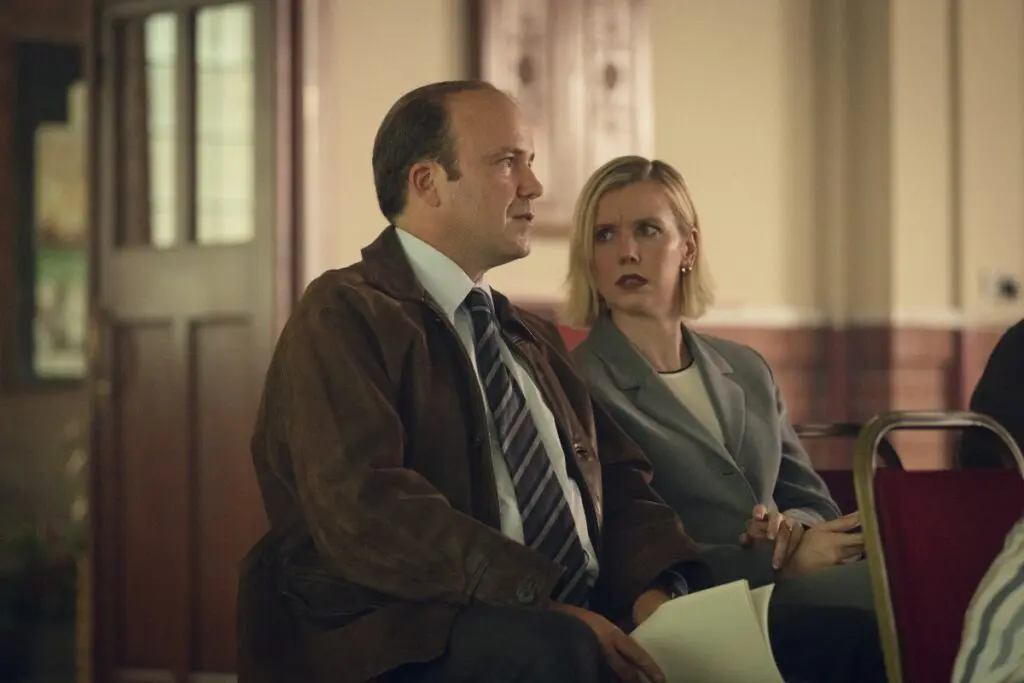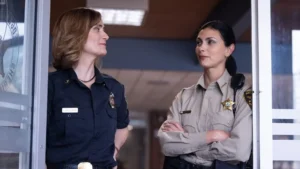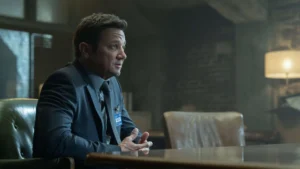The latest in an increasingly long list of power-to-the-people British dramas platforming inspiring true stories and underrepresented parts of the U.K., Toxic Town joins Mr. Bates vs the Post Office and two Bank of Dave movies as another very good drama with an earnest sense of righteousness propping it up. Its uplifting ending gives the four-part series a nice send-off but arguably glosses over some of the sadder details, including the fact that nobody ever faced criminal charges for what happened in Corby.
Still, the broad strokes of what’s being depicted here are true to life, with the legal battle that forms most of the finale being the first ever to establish a link between airborne toxins and damage to unborn children. Susan McIntyre and Tracey Taylor are real, as is Margaret “Maggie” Mahon, whose husband worked at Weldon Plant at Deene Quarry and other British Steel Corporation sites. Lawyer Des Collins is also a real guy, though the Corby Borough Council leadership, Pat Miller and Bill Martin, are fictional, as is Roy Thomas, though he is admittedly a composite of various real people.
The Corby Poisonings
Between 1984 and 1999, Corby Borough Council was responsible for the demolition, excavation, and redevelopment of one of the largest steelmaking operations in Western Europe. This involved transporting enormous quantities of toxic waste to a quarry through populated areas, and important corners were cut in the mind of putting profits over people subsequently resulting in a spate of children being born with upper-limb deformities – a rate three times higher than in local areas and ten times higher than an ordinary town of a similar population should expect.
Eventually, many of the families organized a campaign to take legal action against the council, which is what is depicted in Toxic Town. Susan McIntyre’s second son, Connor Ford, was born with a severe deformity of his left hand, and Tracey Taylor’s daughter, Shelby Ann, was born with a deformed ear and various deformed organs that resulted in her death as an infant.
Lawyer Des Collins leads the families in the case against the council, who refuse to settle due to an apparent lack of evidence. This gives Toxic Town Episode 4 its stakes, as the claimants have to prove their side of the story in court to an unfeeling defense team determined to vilify and ridicule the families.
The Trial
As is to be expected, the trial is played for maximum drama rather than painstaking accuracy. It primarily hinges on a couple of smaller subplots that bring key characters into the fold at just the right time, when in reality the process of analyzing evidence is a longwinded and often dull details-driven one. Toxic Town does at least include, though, a report written by an environmental expert instructed by the families, and testimony from a professor of epidemiology confirming the “statistically significant” difference in the number of children likely to be born with upper limb defects in Corby relative to surrounding areas.
One big turning point is the testimony of Tracey, who is officially not present as a claimant since the death of Shelby Ann doesn’t meet the criteria of upper and lower-limb deformity that the legal case is based on. After a falling-out with Des for keeping this from her, Susan is eventually able to convince Tracey to testify, since the proximity of the work she was doing on the site is integral to the case.

Aimee Lou Wood in Toxic Town | Image via Netflix
Another important moment is Maggie’s testimony since she also speaks for her husband, Derek, who was employed by the council to handle the work. She’s able to speak to his essential character and how he was manipulated into work he knew was dangerous and potentially illegal.
But it’s Ted who comes through in the eleventh hour with perhaps the most compelling testimony. He declares openly that he had flagged multiple concerns about the operations at various sites at all levels of the council and had been repeatedly ignored. It’s his evidence that proves the council was complicit and was deliberately breaking safety protocols to get the site cleared as quickly as possible so redevelopment could begin.
The Outcome
On the strength of the testimonies and the evidence, the judge rules in favor of the Corby mothers, who are awarded £14.6 million.
As mentioned above, no criminal charges were ever brought against the council. However, they did suffer a fate perhaps worse than that. Their plans for Corby were never realized – or at least, they never got to see it.
Roy makes an argument to this end after the ruling, trying to make his case that Des has set Corby back and that ultimately the cut corners were designed to improve the town, create more jobs, and bolster the economy. This may or may not be true in Roy’s mind, but the viewpoint was never strongly espoused anywhere else in the series, which is a shame. Toxic Town was instead content to make the character of Roy a kind of irredeemable mustache-twirling cartoon villain.
Toxic Town ends with some alarming on-screen statistics that I’ll reproduce here:
“A 2021 study of Environment Agency data shows at least 21,000 former landfill sites across England and Wales. Up to 1,287 contain hazardous waste. 167 of these sites are located under housing, shops and restaurants. At least 4 of them are under schools.”




